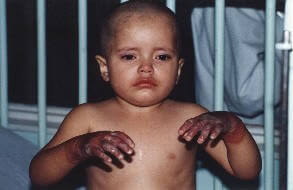Alabama Department of Human Resources
50 North Ripley Street
Montgomery, Alabama 36130
Phone: (334) 242-1425
Email: fsd@dhr.alabama.gov
Alaska Department of Family and Community Services
Phone: (907) 465-3207
Email: ReportChildAbuse@alaska.gov
Arizona Department of Child Safety
P.O. Box 6030
Site Code CH010-23A
Phoenix, Arizona 85005-6030
Phone: (602) 255-2500
Arkansas Department of Human Services
Donaghey Plaza, PO Box 1437
Little Rock, Arkansas 72203
Phone: (501) 683-2735
California Department of Social Services
744 P Street
Sacramento, California 95814
Phone: (916) 651-8848
Email: piar@dss.ca.gov
California Ombudsman for Foster Care
744 P Street
Sacramento, California 95814
Phone: 1(877) 846-1602
Email: fosteryouthhelp@dss.ca.gov
Colorado Department of Human Services
1575 Sherman Street
Denver, Colorado 80203
Phone: (303) 866-5700
Fax: (303) 866-5563
Email: cdhs_clientservices@state.co.us
Connecticut Department of Children & Families
505 Hudson Street
Hartford, Connecticut 06106
Phone: (860) 550-6300
Email: Commissioner.dcf@ct.gov
District of Columbia Child and Family Services Agency Youth Ombudsman
200 I Street, SE
Washington, District of Columbia 20003
Phone: (202) 442-6100
Fax: (202) 727-6505
Email: cfsa@dc.gov
Florida Department of Children and Families
2415 North Monroe Street
Suite 400
Tallahassee, FL 32303-4190
Phone: (850) 487-1111
Georgia's Office of Child Advocate
2 Capitol Square SW
Atlanta, Georgia 30334
Phone: (404) 656-4200
Email: tboga@oca.ga.gov
Hawaii Office of the Ombudsman
465 South King Street, 4th Floor
Honolulu, Hawaii 96813
Phone: (808) 587-0770
Fax: (808) 587-0773
Email: complaints@ombudsman.hawaii.gov
Illinois Advocacy Office for Children and Families
406 East Monroe Street
Springfield, Illinois 62701
Phone: (217) 524-2029
Toll-Free: (800) 232-3798
Indiana Department of Child Services (DCS) Ombudsman Bureau
402 W. Washington Street
Indianapolis, Indiana 46204
Phone: (260) 458-6100
Email: DCSOmbudsman@idoa.in.gov
Iowa Office of Citizens' Aide Ombudsman
Ola Babcock Miller Building
1112 East Grand
Des Moines, Iowa 50319
Phone: (515) 281-3592
Email: ombudsman@legis.iowa.gov
Kansas Department for Children and Families
555 S Kansas Avenue
Topeka, Kansas 66603
Phone: (785) 296-3271
Kentucky Cabinet for Health and Family Services
275 East Main Street, 3E-A
Frankfort, Kentucky 40621
Phone: (502) 564-5497
Email: CHFS.Listens@ky.gov
Louisiana Department of Children & Family Services
627 North Fourth Street
Baton Rouge, Louisiana 70802
Phone: (225) 342-2297
Fax: (225) 342-2268
Email: LAHelpU.dcfs@la.gov
Maine Ombudsman Program
Maine Child Welfare Services Ombudsman
Phone: (207) 213-4773
Toll-Free: (866) 621-0758
Email: ombudsman@cwombudsman.com
Maryland Department of Human Resources
311 West Saratoga Street
Baltimore, Maryland 21201-3521
Toll-Free: (800) 332-6347
Email: dhr-help@dhr.state.md.us
Massachusetts Department of Children and Families Ombudsman
DCF Central Office
600 Washington Street, 6th Floor
Boston, Massachusetts 02211
Phone: (617) 748-2000
Michigan Office of the Child Advocate (OCA)
P.O. Box 30026
Lansing, Michigan 48909
Phone: (517) 241-0400
Fax: (517) 335-4471
Minnesota - The Office of the Ombudsperson for Families
1450 Energy Drive
Suite 106
St. Paul, Minnesota 55108
Phone: (651) 539-1257
Toll-Free: 1-888-234-4939
Fax: (651) 643-2539
Email: obff.info@state.mn.us
Mississippi Department of Human Services
200 South Lamar Street
Jackson, Mississippi 39201
Phone: (601) 359-4500
Missouri Office of Child Advocate
PO Box 809
Jefferson City, Missouri 65102
Toll-Free: (866) 457-2302
Fax: (573) 522-8683
Email: oca@oca.mo.gov
Montana Child and Family Ombudsman
PO Box 201417
Helena, Montana 59620
Phone: 1-844-252-4453
Email: DOJOMBUDSMAN@mt.gov
Nebraska Public Counsel (Ombudsman's Office)
State Capitol
PO Box 94604
Room 807, State Capitol
Lincoln, Nebraska 68509-4604
Phone: (402) 471-2035
Email: ombud@leg.ne.gov
Nevada Division of Child and Family Services
Systems Advocate
4126 Technology Way, 3rd Floor
Carson City, Nevada 89706
Phone: (775) 684-4453
Email: systems.advocate@dcfs.nv.gov
New Hampshire Department of Health and Human Services
Office of the Ombudsman
129 Pleasant Street
Concord, New Hampshire 03301-3857
Phone: (603) 271-9000
Toll-Free: (800) 852-3345
New Jersey Department of Children and Families
PO Box 729, 3rd Floor
Trenton, New Jersey 08625-0729
Phone: 1(855) 463-6323
Email: askDCF@dcf.state.nj.us
New Mexico Children, Youth & Families
PO Drawer 5160
P.E.R.A. Room 254
Santa Fe, New Mexico 87502
Phone: (505) 827-8400
Fax: (505) 827-8480
Email: harry.montoya@state.nm.us
New York State Office of Children and Families
Capital View Office Park
52 Washington Street
Rensselaer, New York 12144-2834
Phone: 518-473-7793
Email: info@ocfs.ny.gov
North Dakota Department of Human Services
600 E Boulevard Avenue, Dept. 325
Bismarck, North Dakota 58505-0250
Phone: (701) 328-2310
Email: dhslau@nd.gov
Ohio Department of Job and Family Services
Office of Constituent Affairs
30 East Broad Street
32nd Floor
Columbus, Ohio 43215-0423
Phone: (614) 466-9280
Email: legislation@jfs.ohio.gov
Oklahoma Department of Human Services
2400 N Lincoln Boulevard
Oklahoma City, Oklahoma 73105
Phone: (405) 522-5050
Oregon Governor's Advocacy/Ombudsman Office
500 Summer St, NE
4th Floor GAO
Salem, Oregon 97301
Phone: (503) 945-6904
Toll-Free: (800) 442-5238
Email: gao.info@odhs.oregon.gov
Pennsylvania Department of Human Services
625 Forester Street
Harrisburg, Pennsylvania 17120
Phone: (800) 692-7462
Rhode Island Office of the Child Advocate
6 Cherrydale Court, Cottage 43
Cranston, Rhode Island 02920
Phone: (401) 462-4300
Fax: (401) 462-4305
South Carolina State Office of Children's Affairs
Department of Children’s Advocacy
1205 Pendleton Street, Suite 471A
Columbia, South Carolina 29201
Phone: (803) 734-3176
South Dakota Department of Social Services
700 Governor's Drive
Pierre, South Dakota 57501
Phone: (605) 773-3165
Email: DSSConstituentLiaison@state.sd.us
Tennessee Commission on Children and Youth
Andrew Johnson Tower, 9th Floor
502 Deaderick Street
Nashville, Tennessee 37243-0800
Phone: (615) 741-2633
Email: tccy.info@tn.gov
Texas Department of Family and Protective Services
4900 North Lamar Boulevard
Austin, Texas 78751
Phone: (512) 929-6900
Email: oca@dfps.state.tx.us
Utah Department of Human Services
195 North 1950 West
Salt Lake City, Utah 84116
Phone: (833) 353-3447
Vermont Department for Children and Families
280 State Drive, HC 1 North
Waterbury, Vermont 05671-1080
Phone: (802) 871-3385
Virginia Department of Social Services
5600 Cox Road
Glen Allen, Virginia 23060
Phone: (800) 468-8894
Email: citizen.services@dss.virginia.gov
Washington State Office of the Family & Children's Ombuds
6840 Fort Dent Way, Suite 125
Mail Stop TT-99
Tukwila, Washington 98188
Phone: (206) 439-3870
Fax: (206) 439-3877
West Virginia Department of Health and Human Resources
Office of Client Services
350 Capital Street - Room 513
Charleston, West Virginia 25301
Phone: (304) 558-4194
Email: osaclientservices@wv.gov
Wisconsin Department of Children and Families
201 West Washington Avenue, Second Floor
PO Box 8916
Madison, Wisconsin 53703-8916
Phone: (608) 422-7000
Fax: (608) 422-7163
Email: dcfweb@wisconsin.gov
Wyoming Department of Family Services
Hathaway Building - 2300 Capitol Avenue, 3rd Floor
Cheyenne, Wyoming 82002
Phone: (800) 457-3659
Email: dfs-directorsoffice@wyo.gov







_800px.jpg)














